Let’s talk about the one design element that most people completely ignore—your ceiling. You’ve spent countless hours choosing the perfect wall colors, agonizing over furniture placement, and curating accessories, but when was the last time you looked up and thought about what’s happening above your head?
Here’s the thing: your ceiling is like the fifth wall of every room, and it’s probably the largest uninterrupted surface in your space. Right now, it’s likely just flat white paint doing absolutely nothing to enhance your home’s design. But imagine walking into a room and immediately feeling like you’ve stepped into a luxury hotel or high-end showroom—that’s the power of a thoughtfully designed ceiling.
Gypsum ceiling design isn’t just about covering up imperfections or hiding wiring (though it does that beautifully). It’s about creating architectural interest, adding layers of lighting that transform your space’s mood, and giving every room a custom, high-end look that makes people stop and stare.
Whether you’re renovating your entire home or just looking for that one dramatic element that pulls everything together, gypsum ceiling design offers possibilities that most homeowners never even consider. From subtle cove lighting that makes rooms feel larger and more sophisticated, to dramatic geometric patterns that create stunning focal points, the right ceiling design can completely transform how your space feels.
Master the Fundamentals of Ceiling Design
Before we dive into specific design ideas, let’s talk about the principles that separate amateur ceiling projects from designs that look professionally planned. You can install the most beautiful gypsum work in the world, but if you ignore these basics, the result will still look off.
Proportion Is Everything – Your ceiling design should complement your room’s size and scale, not fight against it. High ceilings can handle dramatic, layered designs, while lower ceilings need subtle approaches that create the illusion of height rather than making the room feel cramped.
Lighting Integration Is Non-Negotiable – Modern gypsum ceiling design isn’t just about the plaster work—it’s about creating a lighting system that enhances your space’s functionality and ambiance. Plan your lighting scheme first, then design the gypsum work to support it.
Architectural Consistency Matters – Your ceiling design should feel connected to your home’s overall architectural style. Ultra-modern geometric patterns might look stunning, but not if they clash with traditional crown molding and classic furniture.
Quality Installation Is Crucial – Gypsum work shows every imperfection, so professional installation isn’t optional—it’s essential. Poor workmanship will be visible every time you look up, no matter how beautiful the design concept.
Think Beyond Basic Flat Ceilings
The most successful ceiling designs don’t just add decoration—they solve problems and enhance how your space functions. Smart ceiling design can make rooms feel larger, provide better lighting, improve acoustics, and create architectural interest in spaces that otherwise lack character.
Create Visual Height – Recessed designs and cove lighting draw the eye upward, making even standard-height ceilings feel more spacious and grand. This is particularly valuable in modern homes where ceiling heights are often lower than in older architecture.
Zone Different Areas – In open-concept spaces, ceiling design can define different functional areas without walls. A dining area can have different ceiling treatment than the adjacent living area, creating definition while maintaining flow.
Hide Mechanical Systems – Gypsum ceiling work can beautifully conceal HVAC ducts, electrical wiring, and plumbing while providing easy access for maintenance. This is particularly valuable in renovations where running new systems is challenging.
Improve Room Acoustics – Textured gypsum surfaces and strategic design elements can help control sound reflection and absorption, making rooms more comfortable for conversation and entertainment.
Design for Your Lifestyle, Not Just Aesthetics
The best ceiling designs enhance how you actually live in your space, not just how it looks in photos. Consider how each room is used, what kind of lighting you need throughout the day, and how the ceiling design can support those functions.
Layer Your Lighting – Combine ambient lighting (general room illumination), task lighting (focused work light), and accent lighting (decorative highlights) within your ceiling design. This flexibility lets you adjust the mood and functionality throughout the day.
Consider Maintenance – Beautiful ceiling designs should be sustainable long-term. Choose finishes and lighting that can be easily cleaned and maintained, and ensure access panels are incorporated where needed.
Plan for Technology – Modern ceiling designs often need to accommodate smart home systems, speakers, security cameras, or other technology. Plan these integrations from the beginning rather than trying to add them later.
Climate Considerations – Different climates require different approaches to ceiling design and materials. Humidity, temperature fluctuations, and seasonal changes all affect how gypsum work performs over time.
12 Gypsum Ceiling Design Ideas
Elegant Cove Layers in the Living Room
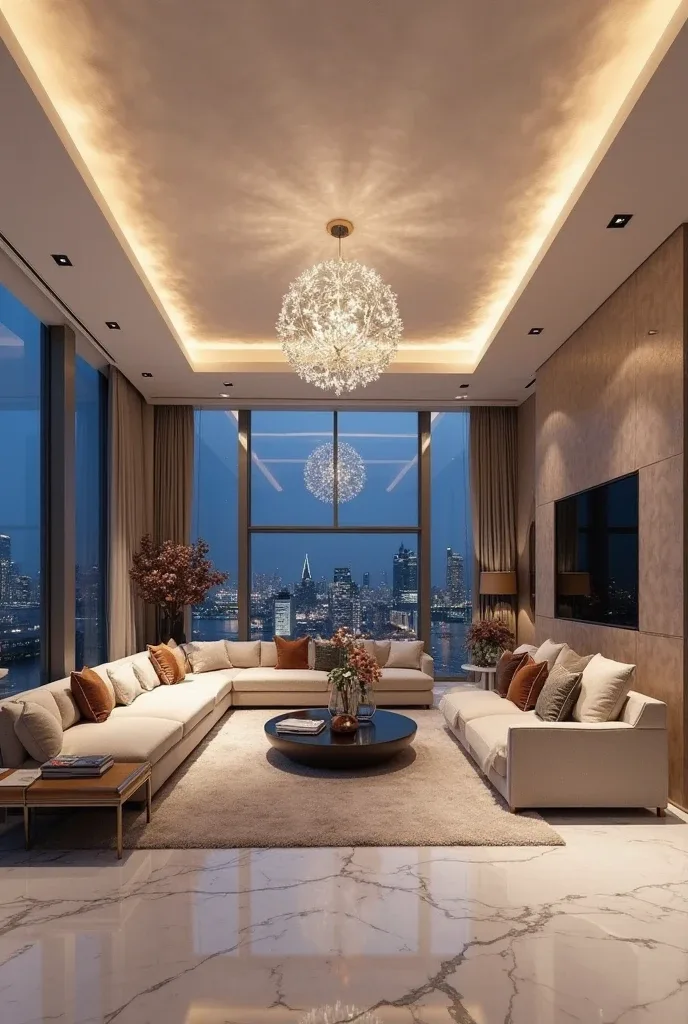
Layered gypsum ceiling design with recessed cove lighting creates one of the most sophisticated and versatile ceiling treatments available. The soft, indirect light from hidden LED strips makes any room feel larger, more luxurious, and infinitely more welcoming than harsh overhead lighting.
The beauty of cove lighting is its flexibility—bright enough for reading or entertaining, but dimmable for movie nights or intimate conversations. The layered gypsum work adds architectural depth that makes even new construction feel custom and high-end.
This approach works particularly well in living rooms where you need flexibility for different activities throughout the day. The warm, even light eliminates shadows and creates a resort-like ambiance that makes everyone look and feel better.
Geometric Ceiling Drama in a Master Bedroom
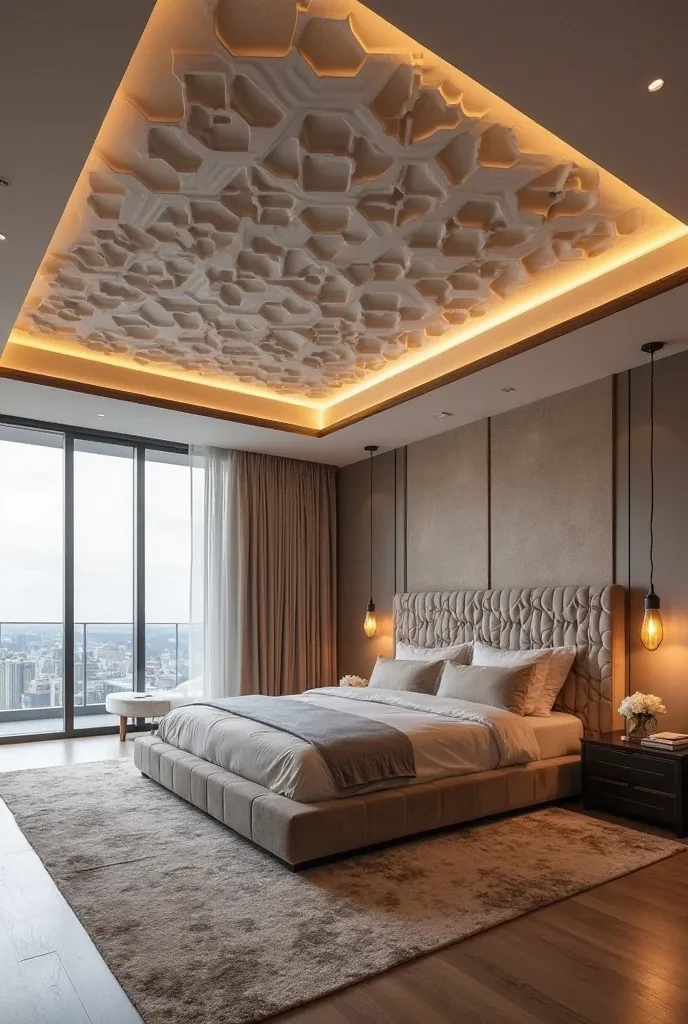
Geometric gypsum ceiling patterns create stunning focal points while providing opportunities for creative lighting integration. The clean lines and mathematical precision of geometric designs feel both modern and timeless, working with contemporary and traditional decor alike.
Integrated LED edge lighting emphasizes the geometric patterns while providing gentle ambient light that’s perfect for bedroom relaxation. The combination of architectural interest and functional lighting eliminates the need for traditional overhead fixtures that can feel harsh in sleeping spaces.
This approach works especially well in master bedrooms where you want to create a sense of luxury and sophistication. The geometric patterns add visual interest without being overwhelming, while the integrated lighting supports both daily routines and evening relaxation.
Floating Panels Over a Kitchen Island
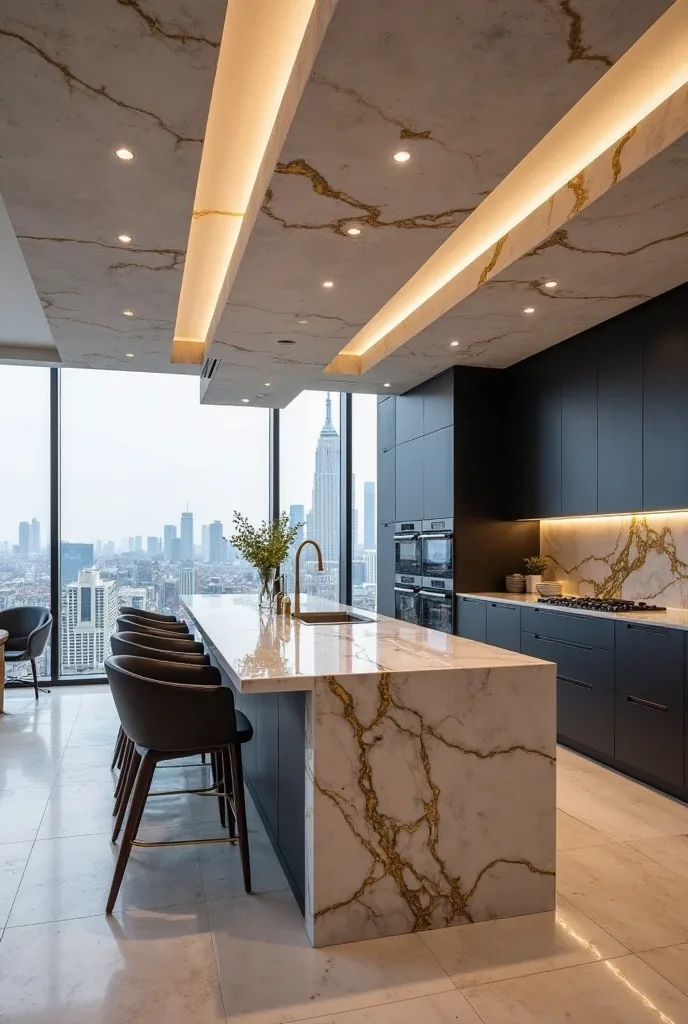
Floating gypsum ceiling panels above kitchen islands create defined cooking and gathering spaces while providing targeted task lighting. This approach works particularly well in open-concept homes where you need to define the kitchen area without blocking sight lines.
Embedded LED spotlights within the floating panels provide excellent task lighting for food preparation while the overall design adds architectural interest to what might otherwise be a plain ceiling. The floating effect creates visual separation without making the space feel closed off.
This design strategy also provides practical benefits—the recessed panels can hide range hood ventilation, electrical wiring, and other mechanical systems while maintaining clean, uncluttered aesthetics.
Illuminated Pathways in a Minimalist Hallway
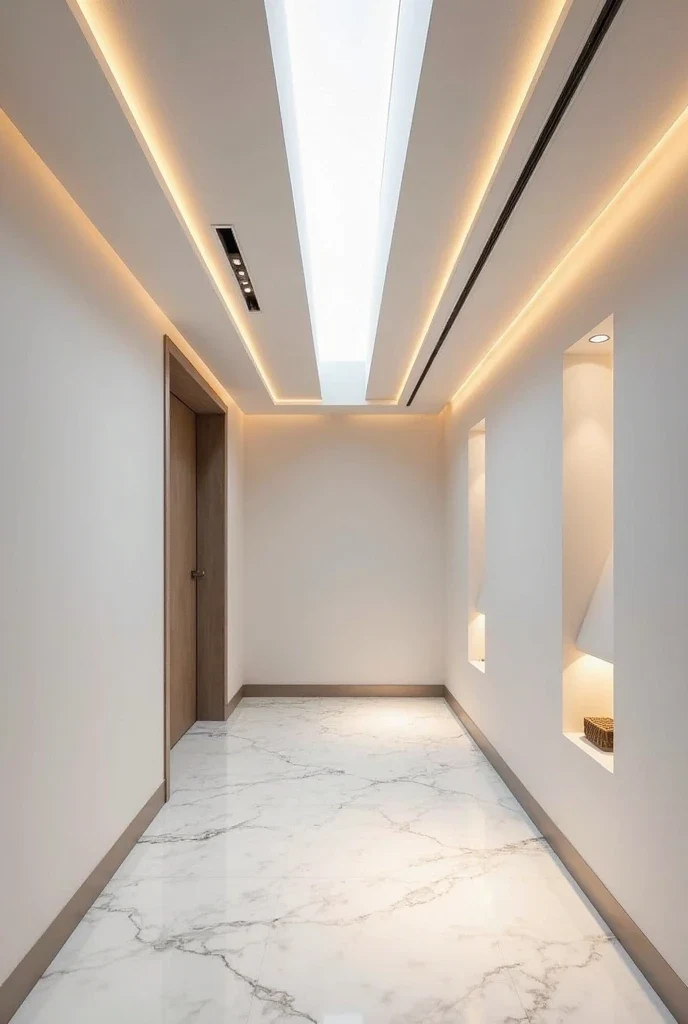
Hallways are often afterthoughts in home design, but they’re opportunities to create dramatic architectural moments that enhance your entire home’s flow. Linear gypsum ceiling grooves with integrated LED strips transform ordinary hallways into gallery-like passages.
The linear lighting creates visual pathways that guide movement through the space while providing adequate illumination for safety and navigation. This approach works particularly well in modern homes where clean lines and minimal aesthetics are priorities.
Adding a narrow skylight along the ceiling groove brings natural light into interior spaces while creating dynamic light patterns throughout the day. This combination of artificial and natural lighting creates constantly changing visual interest.
Coffered Grandeur in a Formal Dining Room
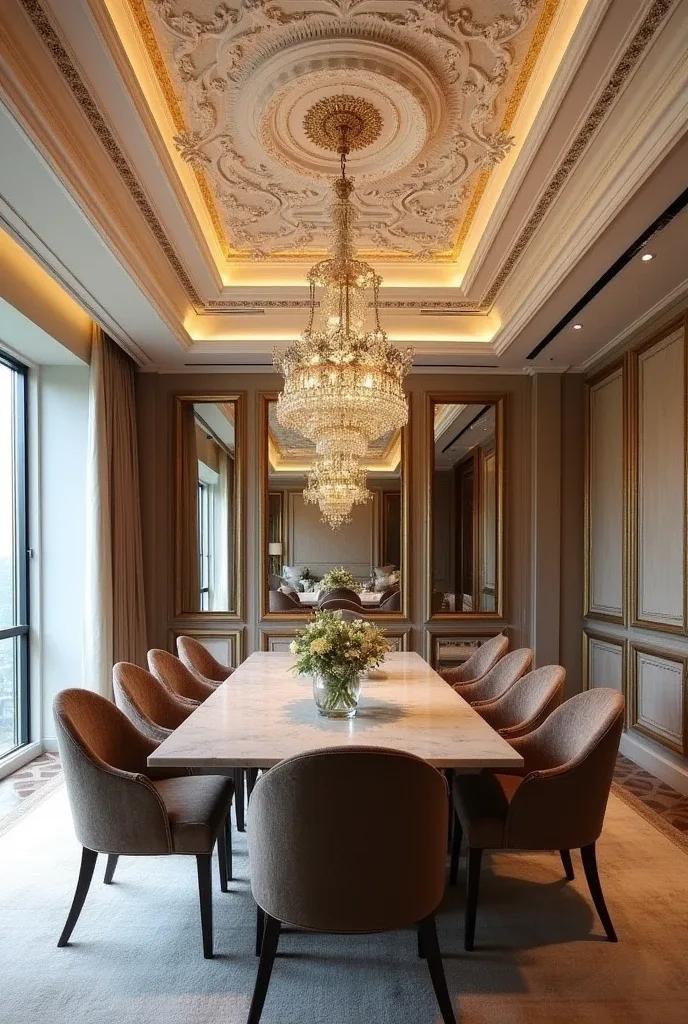
Coffered gypsum ceilings bring traditional architectural elegance to dining rooms while providing opportunities for sophisticated lighting integration. The raised panels and recessed squares create depth and visual interest that makes dining areas feel more formal and special.
Gold accents within the coffered design add luxury without overwhelming the space, while integrated lighting can be adjusted from bright for family meals to dim for intimate dinner parties. This flexibility makes the dining room work for both daily life and special occasions.
The coffered design also provides excellent acoustics for conversation, as the varied ceiling surface helps control sound reflection and creates a more intimate dining experience.
Tranquil Spa-Like Bathroom With Compact Ceiling Design
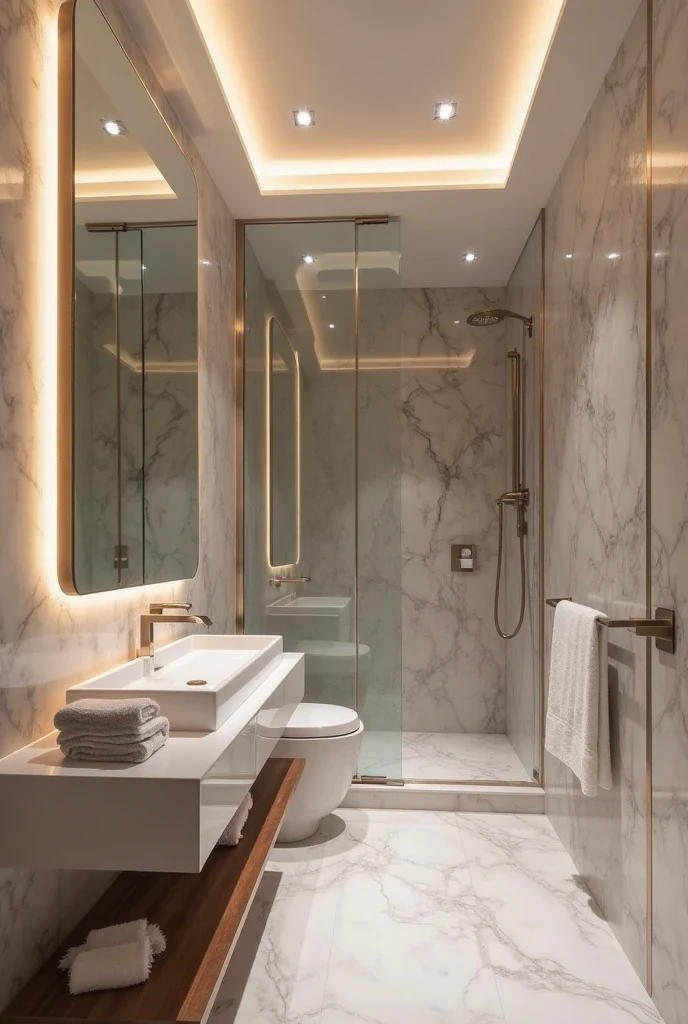
Bathroom ceiling design requires special consideration for moisture, ventilation, and the more intimate scale of these spaces. Compact tray designs with concealed lighting create spa-like ambiance while addressing practical bathroom needs.
Hidden lighting above vanity areas eliminates shadows for daily grooming routines while creating the soft, even illumination that makes bathrooms feel relaxing rather than purely functional. The tray design also provides space to conceal ventilation fans and moisture management systems.
This approach works particularly well in master bathrooms where you want to create a retreat-like atmosphere. The combination of architectural interest and functional lighting transforms daily routines into more pleasant experiences.
Wave Patterns and Dynamic Lighting in the Media Room
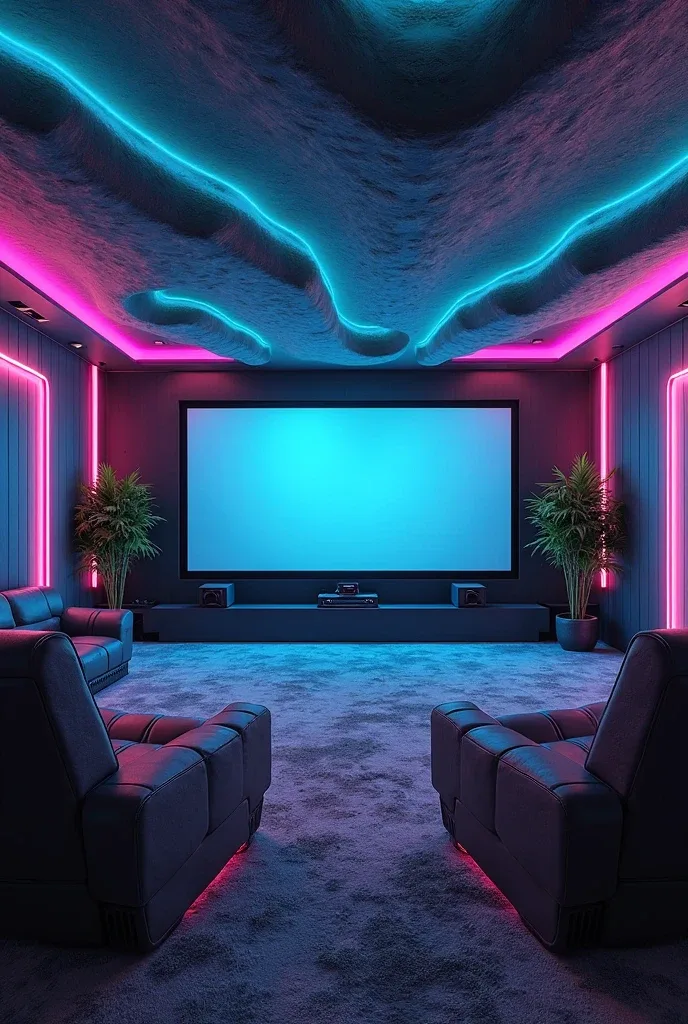
Media rooms offer opportunities for more dramatic ceiling treatments since these spaces are designed for entertainment and relaxation rather than daily functionality. Wave-patterned gypsum ceilings with integrated RGB lighting create immersive environments perfect for movie watching or gaming.
The acoustic benefits of textured ceiling surfaces improve sound quality while the dynamic lighting can be programmed to enhance different types of content. This creates a true home theater experience that rivals commercial entertainment venues.
The wave patterns also help define the media room as a special space separate from other living areas, creating psychological separation that enhances the entertainment experience.
Refined Lighting in a Walk-In Closet Haven
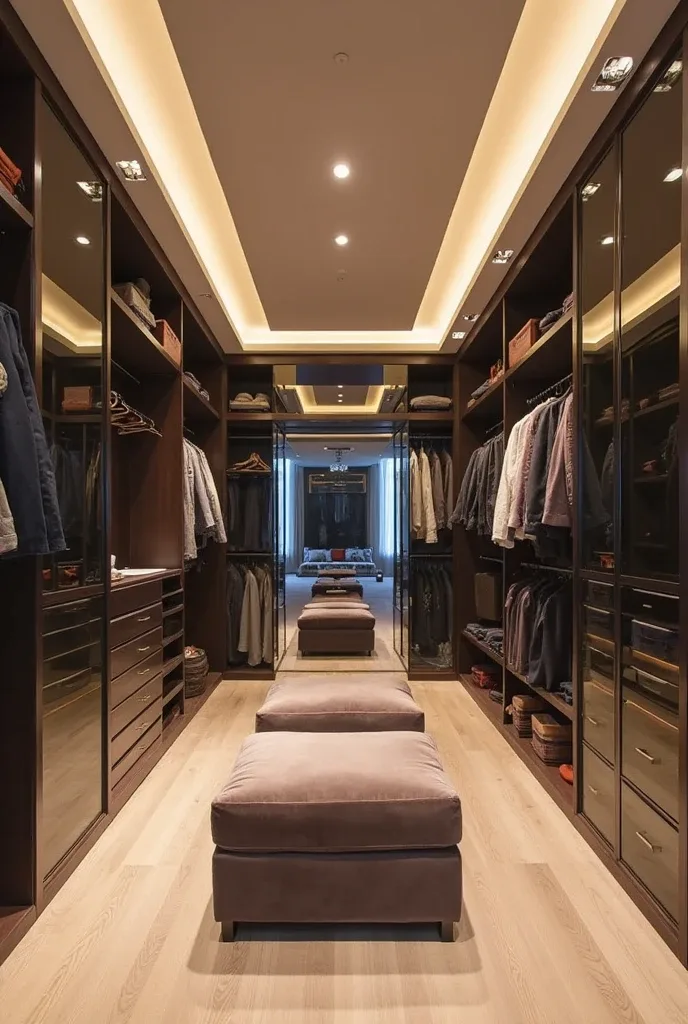
Walk-in closets require excellent lighting for clothing selection and organization, but they’re also opportunities to create luxurious daily experiences. Floating gypsum ceiling beams with integrated warm lighting provide even illumination without creating shadows that make color selection difficult.
The linear lighting design can be extended into wardrobe cabinetry for seamless integration between ceiling and storage systems. This creates a cohesive, high-end appearance that makes daily dressing routines feel more pleasant and efficient.
This approach works particularly well in master bedroom suites where the closet is an extension of the bedroom’s luxury aesthetic rather than just functional storage space.
Zen Lotus Glow in the Yoga Space

Dedicated wellness spaces benefit from ceiling designs that support relaxation and mindfulness practices. Circular gypsum designs with lotus motifs and soft LED backlighting create calming environments perfect for yoga, meditation, or quiet reflection.
The circular design creates a focal point for meditation practices while the soft, even lighting eliminates harsh shadows that can be distracting during yoga or stretching routines. The lotus motif adds meaningful symbolism without being overly decorative.
This approach works well in any space dedicated to wellness activities, creating an environment that supports mindfulness and relaxation practices.
Architectural Elegance in the Home Study
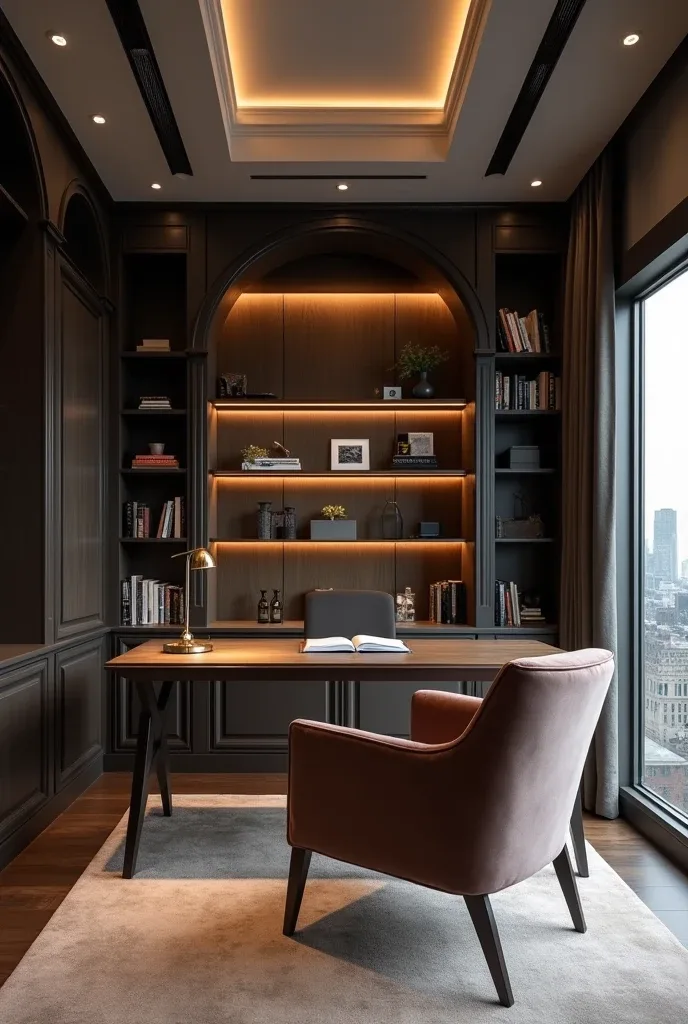
Home offices and studies require excellent task lighting combined with an atmosphere that promotes focus and productivity. Floating rectangular gypsum beams with hidden light tracks provide both ambient and task lighting while creating architectural interest.
The clean, geometric lines support concentration while the integrated lighting can be adjusted throughout the day to support different work activities. Bright lighting for detailed tasks, softer lighting for computer work, and ambient lighting for meetings or calls.
This approach creates a professional environment suitable for video conferences while maintaining the comfort and personal expression appropriate for home spaces.
Grand Entrance with Sculptural Lighting
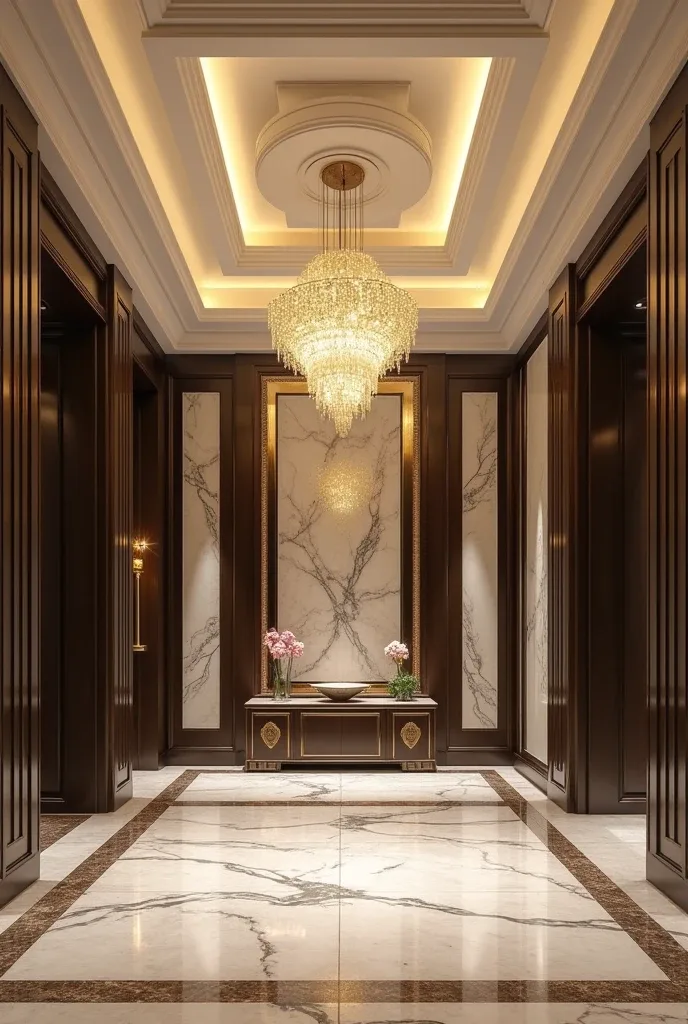
Entry foyers set the tone for your entire home, making them perfect candidates for dramatic ceiling treatments. Layered rectangular gypsum designs with sculptural lighting elements create impressive first impressions while providing practical illumination.
The geometric patterns add architectural interest to what might otherwise be transitional space, while integrated lighting can be programmed to welcome guests and family members home. This combination of form and function makes entries feel grand and welcoming.
This approach works particularly well in homes with higher ceilings where dramatic ceiling treatments won’t feel overwhelming in the relatively small foyer space.
Dreamy Clouds in the Nursery

Children’s spaces offer opportunities for whimsical ceiling treatments that support imagination while providing practical lighting for daily care routines. Cloud-shaped gypsum designs with soft LED lighting create dreamy environments perfect for bedtime routines.
The soft, even lighting eliminates harsh shadows during nighttime feeding or diaper changes while creating a calming atmosphere that supports better sleep. The cloud motifs add visual interest without being overstimulating for young children.
This approach grows with children—the whimsical clouds work for babies and toddlers, while the quality lighting and architectural interest remain appropriate as children grow older.
Final Thoughts
The most successful gypsum ceiling designs don’t just add beauty—they solve problems, enhance functionality, and create environments that support how you actually live in your space. Your ceiling is an opportunity to add custom architectural details that make your home feel more expensive and thoughtfully designed.
The best ceiling treatments feel integral to your home’s design rather than added afterthoughts. When visitors comment on how sophisticated and polished your space feels, but can’t quite put their finger on why, you’ll know your ceiling design is working perfectly.
Remember, ceiling design is a long-term investment in your home’s beauty and functionality. Choose designs that enhance your lifestyle while adding lasting value to your space. Start with one room that could benefit from better lighting and architectural interest, and build from there. You might be surprised how much difference looking up can make in your overall home design.

